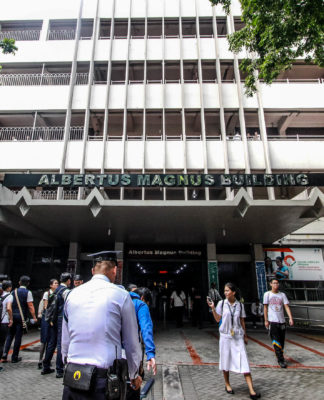 AUTHOR Dan Brown’s infamous statement of Manila as the “gates of hell” may have caused quite an uproar among Filipinos two years ago, but given the current situation of traffic and transportation woes in the city, one may have to treat the line as gospel truth rather than an exaggeration.
AUTHOR Dan Brown’s infamous statement of Manila as the “gates of hell” may have caused quite an uproar among Filipinos two years ago, but given the current situation of traffic and transportation woes in the city, one may have to treat the line as gospel truth rather than an exaggeration.
Being a regular commuter, I have had my fair share of times uttering curse words out of sheer annoyance that despite an early morning start, a major gridlock is bound to have me late and distressed.
I have had instances wherein a 30-minute travel from Makati to Shaw Boulevard became a three-hour excursion. To commuters haggling with EDSA on a daily basis, it is always a toss-coin between putting up with the long MRT lines and playing the waiting game inside a bus reminiscent of a sardines can.
But atleast, the traffic is “not fatal.” Or so says Transport and Communications Secretary Joseph Abaya in a TV interview last Aug. 17.
He was quick to downgrade his shocker of a description to “not burdensome” before later on apologizing for his remarks all in all.
A year ago, several government officials have taken it upon themselves to take the challenge of riding public transport on rush hour to immerse themselves in the life of a daily commuter. Whether that was campaigning strategies or sincere gestures to improve the transport system is another story.
News outfits reported the Philippines as ranking fifth among countries with the worst traffic conditions in the world and third in Asia.
Adding insult to injury, the dismal traffic situation is said to be costing the country P2.4 billion a day. According to a report done by the Japan International Cooperation Agency, the daily traffic grind affects commuters’ productivity hours, health, fuel costs among others.
Putting a monetary equivalent on the time wasted on the road may be unlikely, but picture the possibilities of having the two to three hours a day spent on commute translated to extra hours with family or on study.
The mammoth road congestion problem should not be merely seen as a commuter concern or a social media rant by the late and the haggard. It is a serious threat that could derail the country’s economy.
With pollution being one of the obvious consequences of the influx of vehicles on the road, health concerns also rise and so does the hospital bill. Higher fuel costs due to turtle speeds during traffic also means bad news for transport operators and owners who will be making less profit.
On a larger scale, the horrendous traffic blunder likewise affects the country’s foreign investments scene.
During my internship, I had the chance to talk with European Chamber of Commerce of the Philippines Vice President for Membership and Business Services, Florian Gottein, who said that one of the main hindrances he sees in the development of the country is on infrastructure, noting that potential investors would be less likely to set their eyes on the Philippines if the difficult traffic situation persists.
According to architect and urban planning expert, Jun Palafox, an average Manila resident spends 28,000 hours of his economic life in traffic. That is almost three years of wasted time—nothing too serious to fret about apparently, as far as the government’s transport sector is concerned.
With all due respect, the efforts to have Manila roads facelifted are recognized. However, I fear for the amount of dedication authorities are putting on the battle against decongesting the city. We have seen time and time again road repairs and coding schemes in varying shades of success.
There is re-building but not exactly renewal, so are we really inching closer to solving the root of the problem?
With politicians playing urban planners and calling the shots without considering the long-term consequences of a mix-and-match type of construction, our transport system will truly be a laughing stock, if it does not prove to be fatal, at least in the long run.
















ü